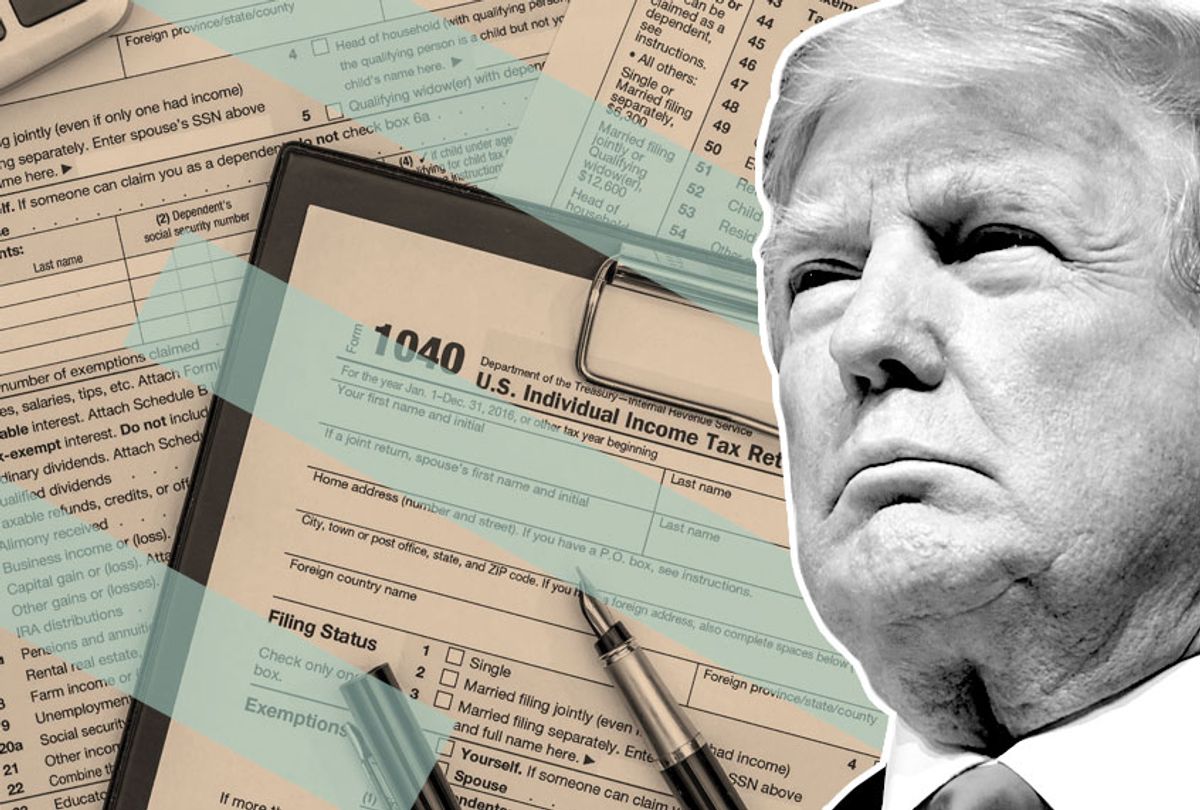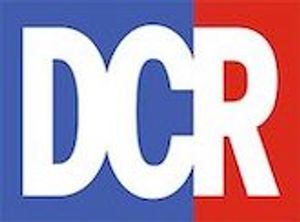The first data showing how all Americans are faring under Donald Trump reveal the poor and working classes sinking slightly, the middle class treading water, the upper-middle class growing and the richest, well, luxuriating in rising rivers of greenbacks.
More than half of Americans had to make ends meet in 2018 on less money than in 2016, my analysis of new income and tax data shows.
The nearly 87 million taxpayers making less than $50,000 had to get by in 2018 on $307 less per household than in 2016, the year before Trump took office, I find.
That 57% of American households were better off under Obama contradicts Trump's often-repeated claim he created the best economy ever until the pandemic.
The worsened economic situation for more than half of Americans contradicts Trump's frequent claims that he is the champion of the "forgotten man" and his vow that "every decision" on taxes "will be made to benefit American workers and American families."
The figures in this story come from my annual analysis of IRS data known as Table 1.4. The income figures are pre-tax money that must be reported on tax returns. I adjusted the 2016 data to reflect inflation of 4.1% between 2016 and 2018 (slightly more than 2% a year).
This is the first data on the first full year when Trump was president. It also is the first year of the Radical Republican tax system overhaul, passed in December 2017. The Trump tax law, the most significant tax policy change since 1986, was passed without a single public hearing or a single Democratic vote.
High income households multiply
Trump policies overwhelmingly favor the top 7% of Americans. And, oh, do they benefit!
Prosperous and rich people, the data reveal, include half a million who are not even filing tax returns. Yet they are not being pursued as tax cheats, a separate report shows.
The number of households enjoying incomes of $200,000 or more soared by more than 20%. The number of taxpayers making $10 million or more soared 37% to a record 22,112 households.
Who saves on taxes
The Trump/Republican tax savings were highly concentrated up the income ladder with hardly any tax savings going to the working poor and only a smidgen to the middle class.
Those making $50,000 to $100,000 for example, paid just three-fourths of 1 percentage point less of their incomes to our federal government. People making $2 million to $2.5 million saw their effective tax rate fall by about three times that much.
Now let's compare two groups, those making $50,000 to $100,000 and those declaring $500,000 to $1 million. The second group averaged nine times as much income as the first group in 2018.
Under the Trump tax law, the first group's annual income taxes declined on average by $143, while the second group's tax reduction averaged $17,800.
Put another way, a group that made nine times as much money enjoyed about 125 times as much in income tax savings.
This disparity helps explain Trump's support among money-conscious high-income Americans. But given the tiny tax benefits for most Americans, along with cuts in government services, it is surprising Trump enjoys significant support among people making less than $200,000.
But realize none of the biggest news organizations do the kind of analysis you are reading, at least not since I left The New York Times a dozen years ago. Instead, the major news organizations quote Trump's claims and others' challenges without citing details.
Understating incomes
The figures I cite here understate actual incomes at the top for two reasons. One is that loopholes and Congressional favors allow many rich and superrich Americans to report much less income than they actually enjoy. Often they get to defer for years or decades reporting income earned today.
Second, with Trump's support Congress has cut IRS staffing so deeply that the service cannot even pursue growing armies of rich people who have stopped filing tax returns. The sharp decline in IRS auditing means tax cheating—always a low-risk crime—has become much less risky.
Trump ignores rich tax cheats
In the three years ending in 2016, the IRS identified 879,415 high-income Americans who did not even bother to file. These tax cheats owed an estimated $45.7 billion in taxes, the treasury inspector general for Tax Administration reported May 29.
Under Trump more than half a million cases of high-income Americans who didn't file a tax return "will likely not be pursued," the inspector general wrote.
One of the Koch brothers was under IRS criminal investigation until Trump assumed office and the service abruptly dropped the case. DCReport's five-part series last year showed, from a thousand pages of documents, that William Ingraham Koch, who lives one door away from Mar-a-Lago, is collecting more than $100 million a year without paying income taxes.
Borrowing to help the rich
Trump's tax law will require at least $1.5 trillion in added federal debt because it falls far short of paying for itself through increased economic growth even without the pandemic. Most of the tax savings were showered on rich Americans and the corporations they control. Most of the negative effects will fall on the middle class and poor Americans in the form of Trump's efforts to reduce government services.
The 2017 income tax law caused only a slight decline in the share of adjusted gross income that Americans paid to Uncle Sam, known as the effective tax rate. Adjusted gross income is the last line on the front page of your tax return and is in the measure used in my analysis.
The overall effective tax rate slipped from 14.7% under Obama to 14.2% under Trump.
Curious anomaly
In what might seem at first blush a curious development, Americans making more than $10 million received a below-average cut in their effective tax rate. The effective tax rate for these 22,000 households declined by less than half a percent.
The reason for that smaller-than-average decline is that these super-rich Americans depend less on paychecks and much more on capital gains and dividends that have long been taxed at lower rates than paycheck earnings.
The new tax data also show a sharp shift away from income from work and toward income from investments, a trend which bodes poorly for working people but very nicely for those who control businesses, invest in stocks and have other sources of income from capital.
Overall the share of American income from wages and salaries fell significantly, from almost 71% in 2016 to less than 68% in 2018.
Meanwhile, if you look just at the slice of the American income pie derived from business ownership and investments, it expanded by nearly one-tenth in two years. Income from such investments is highly concentrated among the richest Americans.
Infuriating fact
There's one more enlightening and perhaps infuriating detail I sussed from the IRS data.
The number of households making $1 million or more but paying no income taxes soared 41% under the new Trump tax law. Under Obama, there were just 394 such households. With Trump, this grew to 556 households making on average $3.5 million without contributing one cent to our government.
Again, Trump seems to have forgotten all about the Forgotten Man. But he's busy doing all he can to help the rich, then stick you with their tax bills.




Shares